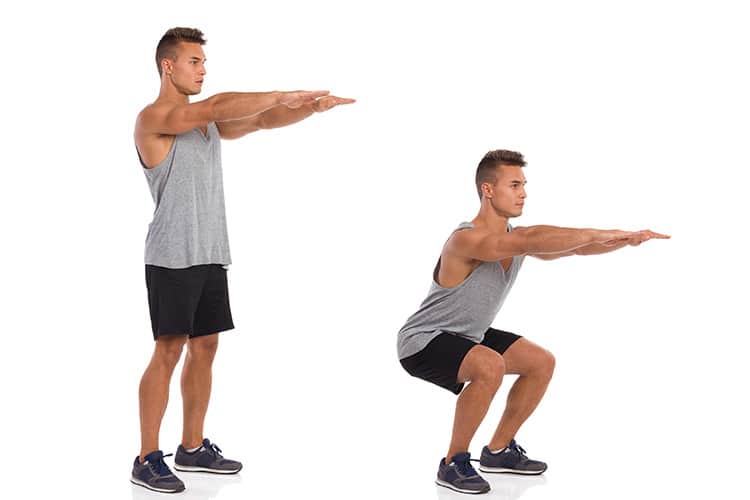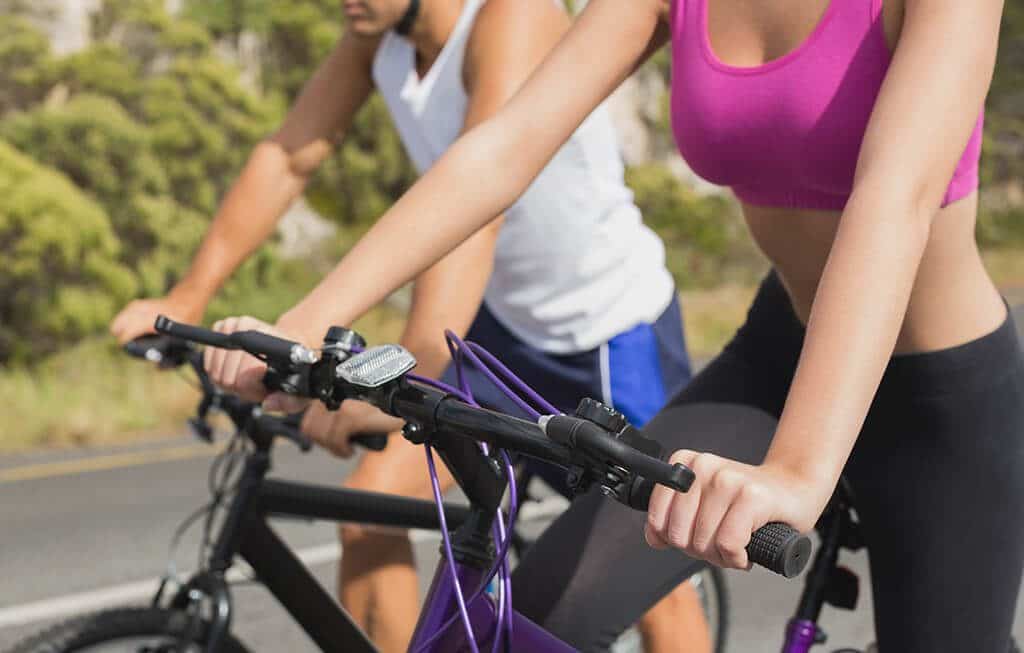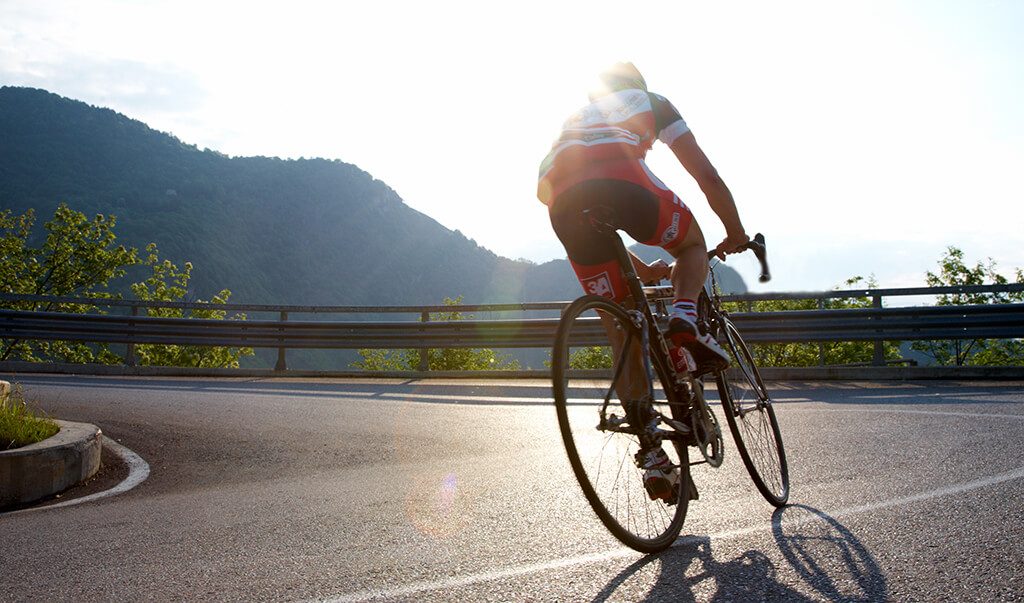Cycling’s like the secret love child of fun and torture, especially when those hills look more like mountains.
We’ve all been there, pushing the pedals, dreaming of the day our legs turn into those of a Greek god or goddess.
Strong legs aren’t just for show; they’re the powerhouse behind every cyclist, whether you’re sprinting to the finish line or just cruising around town.
And let’s be honest, who doesn’t want to make cycling easier and faster?
While pedaling away does give your legs a workout, there’s more to leg strength than meets the eye.
I’ve gone crazy deep into the world of cycling coaches and fitness buffs to uncover the secret sauce for beefing up those leg muscles.
Spoiler alert: It’s not all about clocking miles on the bike.
From explosive bodyweight exercises to a sprinkle of strength training, I’ve got the lowdown on how to supercharge your cycling game.
The Importance of Leg Strength for Cycling

Understanding Muscle Use in Cycling
When I talk about cycling, it’s tempting to think it’s all about those leg muscles simply spinning the pedals around, but it’s more nuanced than that.
Cycling engages a complex network within your legs. Essentially, your quads, hamstrings, calves, and even your glutes work in harmony every time you push down or pull up on those pedals.
This concerted effort not only propels you forward but stabilizes your ride, making efficient use of every ounce of energy you put in.
But here’s the kicker: different cycling styles and terrains demand different things from your muscles.
Climbing a steep hill, for instance, leans heavily on your quads and glutes for that powerful push.
In contrast, sprinting on flat terrain taps more into your calves and hamstrings.
That’s why understanding the diverse muscle use in cycling is key. It clues you in on what areas to focus on strengthening to boost overall cycling performance.
Benefits of Stronger Legs for Better Performance
Let me dive straight into it – having stronger legs isn’t just about increased speed, though that’s a significant part of it.
With stronger leg muscles, you’re looking at a drastic improvement in endurance. This means you can maintain a higher intensity for longer periods without tiring out.
Ever noticed how some cyclists seem to breeze through long distances? That’s leg strength at play.
And it’s not just about lasting longer; it’s about riding smarter. Stronger legs afford you better bike control and stability, especially on tricky terrains.
This added muscle power translates to more responsive maneuvering and braking. And let’s not forget injury prevention.
By building up leg strength, you’re cushioning your joints and ligaments against the stress of repetitive motion, making pesky injuries less likely.
Key Leg Strengthening Exercises for Cyclists

Squats for Overall Leg Strength
Squats are my go-to for a solid leg workout; they’re incredibly effective for cyclists. The beauty of squats is they target nearly every muscle in your legs—quads, hamstrings, and glutes—all at once.
Plus, they give your core a nice workout.
If you’re new to strength training, starting with bodyweight squats can help you nail down the proper form.
As you get more comfortable, mixing in variations like goblet squats or Bulgarian split squats can keep things fresh and challenging.
These variations not only add diversity but also enhance the engagement of different muscles, mirroring the varied demands of cycling.
Deadlifts: Romanian and Single-Leg
Deadlifts are another powerhouse exercise, perfect for cyclists looking to strengthen their lower body.
A standard deadlift activates pretty much every muscle beneath your waist, including those critical to powerful pedaling like your glutes and hamstrings.
I particularly value Romanian deadlifts for the added emphasis they put on the hamstrings.
For those who’ve already got a good balance and are looking to up the ante, single-leg deadlifts are a fantastic option. They require and build incredible balance, which is super useful on the bike, especially over uneven terrains.
Lunges for Balanced Muscle Development
Lunges are stellar for creating balance and muscle development in each leg. Cycling can sometimes lead to imbalances, but lunges help correct that by strengthening each leg independently.
They target the quads, hamstrings, and glutes while also challenging your core stability.
Once you’ve got your basic lunge form down, try stepping up to jumping lunges.
They add an explosive cardio element that’s beneficial for sprinting and attacking hills.
Calf Raises: Building the Foundation
I’ve noticed that calves often get overlooked, but they’re fundamental for any cyclist.
That burning sensation in your calves after a long ride? It’s a vivid reminder of their role.
Calf raises are simple yet super effective for building strength in this area.
Holding a dumbbell in each hand can increase the challenge as you progress.
Over time, pumping up the weight gradually will result in more power and stamina in your pedal stroke.
Glute Bridges for Core and Hip Strength
Don’t let the simplicity of glute bridges fool you; they’re fantastic for cyclists.
This exercise fortifies the glutes and hams but also engages your core and hip muscles, enhancing stability on the bike.
Stronger glutes mean more power for climbing and sprinting, making glute bridges a must in your training regimen.
Specific Cycling Drills
Incorporating cycling-specific drills into your training can hugely benefit your leg strength and overall performance.
Single-leg pedaling on a trainer, for instance, can dramatically improve your pedal stroke efficiency by forcing each leg to do its share of the work.
Similarly, integrating big-gear efforts or hill sprints into your rides can boost muscular endurance and power.
Whether you’re on a rolling route or sticking to the flats, adjusting your ride to include these drills will ensure your legs are well-rounded powerhouses capable of tackling whatever comes your way.
Integrating Strength Workouts into Your Cycling Routine

How to Combine Strength and Endurance Training
Incorporating both strength and endurance training into my cycling routine has been a game-changer. I’ve found that the key is balance.
You don’t want to go so hard on strength exercises that you’re too exhausted for your rides, nor do you want to cycle so much that you can’t perform your strength workouts effectively.
Here’s how I manage to get the best of both worlds.
I dedicate specific days to focused leg strength training, separate from my cycling days.
This involves exercises like squats, deadlifts, and lunges, aiming for lower reps but higher intensity. These are the foundation days where I build muscle power and resilience.
On alternate days, I engage in cycling sessions that are more endurance-focused, varying the intensity and duration to match my cycling goals.
For instance, a typical week might see strength training on Monday and Thursday, with cycling workouts on Tuesday and Friday, allowing for rest or active recovery on the other days.
It’s also key to listen to my body.
If I’m feeling worn out or sore, I’ll adjust accordingly, swapping a high-intensity ride for a more leisurely session, or substituting a strength workout with yoga or stretching.
This approach ensures I’m building strength and endurance without risking overtraining or injury.
Building Workouts into Your Rides: In or Out of The Saddle?
Mixing in workouts during my rides has also been incredibly effective for improving my cycling performance. I’ve experimented with both in-saddle and out-of-saddle exercises, each offering unique benefits.
For in-saddle workouts, I focus on interval training.
This might involve several minutes at a high intensity followed by a period of rest, repeating throughout the ride.
It’s a fantastic way to boost endurance and simulate the varied pace of real-world cycling scenarios.
Out-of-saddle workouts include standing climbs and sprints. These not only add variety to my rides but also help develop powerful leg muscles and improve my balance and coordination on the bike.
Plus, they’re a great way to mimic the demands of outdoor cycling, especially when I’m training indoors.
Whether I’m pushing through a steep climb out of the saddle or tackling sprints in the saddle, integrating these exercises into my rides ensures I’m continuously building both strength and endurance.
This approach keeps my training fresh and challenging, helping me achieve my cycling goals.
Recovery and Maintenance

The Role of Cooldowns and Stretching
I can’t stress enough how vital cooldowns and stretching are after an intense cycling session or leg workout.
When I’ve pushed my limits on the bike or in the gym, taking the time to properly cool down helps my body transition to a state of recovery more effectively.
This isn’t just about reducing muscle soreness (though it’s a great benefit); it’s about promoting flexibility and decreasing the risk of injury.
A solid cooldown could include a gentle ride for 5-10 minutes at a low intensity, allowing my heart rate to gradually decrease.
Following this, I dedicate at least 10 minutes to stretching the main muscle groups I’ve worked, focusing on my quads, hamstrings, calves, and glutes.
Dynamic stretches before riding and static stretches post-ride have worked wonders for me, enhancing my flexibility and preparing my muscles for the next training session.
Recognizing Signs of Overtraining
In my journey, recognizing the signs of overtraining has been key to maintaining consistent progress and avoiding setbacks.
Overtraining isn’t just about feeling tired; it’s a compound issue that can severely impact performance and overall health.
Symptoms like persistent fatigue, decreased performance, mood swings, and trouble sleeping are red flags I never ignore.
When my rest days aren’t enough to recover fully or if my motivation starts dwindling significantly, I take it as a sign that I might be pushing too hard.
Listening to my body has been a game-changer. Ensuring I have adequate rest days and not ignoring signs of overtraining has helped me sustain my passion for cycling without burning out.
Adjusting my routine when needed and not being afraid to take an extra day off when the signs of overtraining creep up has been key in my continuous improvement and enjoyment of the sport.
